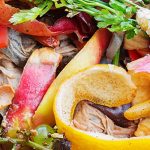Online Grocery Shopping Can Curb Food Waste
Online shopping and delivery platforms are changing the way that Americans buy their groceries. According to the U.S. Chamber of Commerce, the U.S. online grocery market was $23.9 billion in 2018, and it will grow to $59.5 billion by 2023. The convenience consumers crave is leading to a new issue: increased levels of post-consumer food waste.
A recent study published in the Journal of Retailing and Consumer Services showed that consumers who purchase groceries online waste more food than consumers who shop in-store. The study found that consumers who don’t take the time to choose, bag, and transport produce are more likely to let it go to waste. Due to decreased effort and investment, consumers are less concerned about throwing away the food at home.
So how can grocery stores that already generate an estimated 8 million tons of food waste per year curb food waste? Below are some best practices that apply to grocers with or without online shopping options.
Education and Frequency
Consumer awareness and education are critical to curbing food waste. With the convenience of online grocery shopping comes an increased frequency. People that would only go to the store once a week and stock up are more likely to make several smaller purchases throughout the week online. Simple improvements to online shopping analytics can alert customers of duplicate purchases, and offering produce in smaller batches will also prevent consumers from buying more than they need.
Offer Discounts on “Ugly Produce”
It is estimated that nearly 40% of the produce grown in the U.S. never makes it to market because it doesn’t meet appearance standards. Historically, research has shown that consumers would only purchase produce that fits a very narrow visual standard of perfection, which caused grocers to only purchase produce items that fit the standards. However, more and more eco-conscious consumers are now more likely to buy “ugly produce” at a discount, versus letting it be thrown out. Grocers have the opportunity to sell imperfect food that would otherwise be discarded by launching a discounted ugly food campaign. They can manage it themselves or with companies that specialize in providing imperfectly shaped but otherwise quality produce at a discount to eco-conscious consumers.
Localize & Personalize
Taking a “local” approach to produce has shown amazing results in the restaurant industry. Using hyper-focused personalized marketing techniques, grocers present consumers with effective offers, product recommendations, recipes, and hyper-localized product assortments that have shown to increase sales. Consumers that want “local, fresh, farm-to-table” produce hold local produce in higher regard than they do mass-produced produce, which in turn helps consumers feel a stronger sense of personal responsibility to not waste it. Getting people personally invested with their food will help ensure they are less likely to throw it away and help curb food waste.
Improvements to the Supply Chain
The supply chain between growers and retailers is another area where improvements can be made. Improved logistics, analytics, and use of technology have shown to reduce the over-ordering of highly perishable items.
Online shopping is no longer a budding trend; it is now how Americans do business. Grocers have an amazing opportunity to shape the market in its infancy to prioritize sustainability from day one.
This article originally appeared on page 5 of Today’s Grocer









